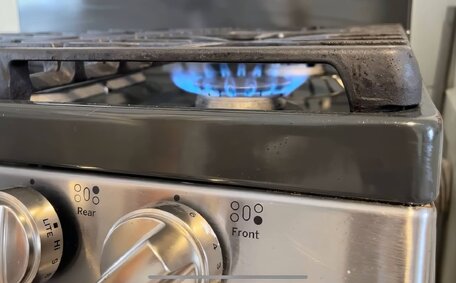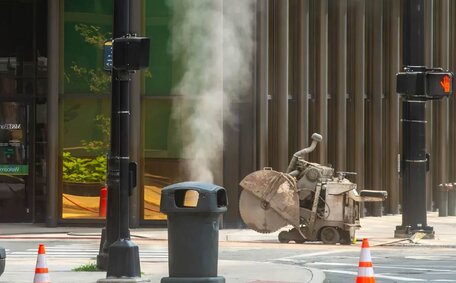Understanding Hot Water System Insulation
Selecting suitable insulation for your hot water system is crucial for maximizing energy efficiency. Insulating hot water tanks and pipes minimizes heat loss, leading to savings on energy expenses and consistent hot water supply. There are significant benefits to insulating your hot water system:
- Lessens heat loss from tanks and pipes by acting as a barrier that significantly slows heat transfer to the surrounding air.
- Lowers energy bills as less heat loss means the water heater uses less electricity or gas to maintain temperatures.
- Maintains more consistent water temperature - Insulated pipes deliver hotter water to your fixtures, reducing annoying cold water surges.
- Increases safety - Surface temperatures are reduced, minimising burn risk.
- Better for the environment - Greater energy efficiency means lower carbon emissions from your home.
Pipe lagging refers to insulation wrapped around hot water pipes. The Building Code of Australia mandates pipe insulation based on climate zones and pipe diameter, as insufficient lagging can waste up to 25% of water heating energy.
Insulating pipes as per Australian standards keeps water hotter as it flows, but correctly insulating your hot water storage is equally crucial. Tank insulation reduces standby heat losses by up to 75%, saving you money.
Installing insulation offers peace of mind, ensuring your system operates with optimal efficiency and reliability. Small upgrades make big differences to comfort and energy bills for years to come.
Reducing Heat Loss from Tanks and Pipes
Heat generally transfers from warmer items to cooler environments. Your hot water tank and pipes lose heat to the air, wasting energy. Insulation creates a thermal barrier to retain heat and reduce losses.
To reduce heat loss in your system, follow these steps:
- Inspect pipes and valves in unheated areas like the roof or garage for insulation damage allowing heat escape.
- Examine tank insulation for defects, particularly near the thermostat. Install an insulating jacket if current insulation is insufficient.
- Replace deteriorating pipe insulation with material that has an R-value of at least R1.5, suitable for warm climates such as Sydney’s.
- Polyethylene foam - Durable and moisture resistant.
- Rubber foam - Flexible, suits complex pipe routes.
- Fibreglass - Economical, though it’s less durable.
Insulated tanks and pipes keep 75-95% more heat than non-insulated ones, reducing energy waste, costs, and emissions.
Choosing Suitable Insulation Materials
Consider effectiveness, durability, and installation ease when choosing insulation materials for your hot water system. The main options include:
- Pipe sleeves - Pre-split polyethylene or rubber pipe sleeves that slip over pipes then seal closed. Waterproof and flexible.
- Glass wool batts - Affordable insulation that comes in rolls or segments. Fibreglass construction offers good insulation if properly installed.
- Foil-faced batts - Include a reflective foil that enhances insulation capability. The foil also provides a moisture barrier.
- Pipe wrap tape - Self-sealing tape wrapped around pipes for quick, simple insulation.
- Spray foam - Applied as a viscous liquid then expands to form rigid foam ideal for insulating irregular surfaces.
Additional considerations when selecting insulation:
- Ensure insulation is UV stabilised if pipes are exposed to sunlight and prone to sun damage.
- Select materials with R-values that comply with Australian standards for your specific climate zone.
- Consider fire resistance ratings if insulating pipes passing close to potential ignition sources.
An insulation professional can advise the best product for your situation. Properly installed quality insulation keeps your water hot while controlling energy consumption.
Installing Insulation on Hot Water Pipes
While insulating hot water pipes enhances energy efficiency, safety should always be the primary concern. Ensure the water heater is switched off and the gas supply is isolated before commencing any insulation work. Consult the AS/NZS 3500 standards for guidance on pipe insulation requirements.
You’ll need the following tools and materials:
- Measuring tape
- Marker pen
- Insulation cutters or sharp scissors
- Insulation tape
- Insulation sleeves or batts
Here are the essential steps:
- Measure pipe circumferences, then cut sleeves or batts slightly longer to ensure full coverage.
- Install insulation on pipes, ensuring joints are sealed with tape to create a tight fit.
- Secure the ends with additional tape or clamps as required.
- For especially cold environments, double-wrap pipes with extra insulation.
- Insulate valves, bends and fittings that are prone to heat loss.
Selecting suitable materials for your climate zone ensures long-term protection against heat loss. Properly installed insulation also ensures compliance with national plumbing standards.
Ensuring Proper Coverage and Safety
Comprehensive and uniform insulation coverage is critical to maximize heat retention and ensure safety. Unfortunately, many systems have gaps or thin patches allowing heat loss.
Common insulation mistakes to avoid, which help save energy, include:
- Missing sections on pipes or fittings
- Worn or damaged areas on older pipe insulation
- Inadequate coverage of valves, bends, joints
- Tank insulation shifting to expose upper areas
- Insulating indoor but neglecting outdoor pipework
Also consider safety factors when insulating around gas or electric hot water units:
- Avoid covering air vents on gas systems and ensure maintenance components remain accessible
- Keep insulation cleared from flues, electrical wiring and sources of ignition
- Refer to manufacturer guidelines and Australian Standard AS/NZS 5601.1 regarding safe clearance distances
Be cautious with stainless steel tanks, as direct insulation contact can speed up corrosion. Instead, install an air gap or protective barrier.
Regular inspections of insulation for integrity ensures that your system operates efficiently. Maintaining full, consistent coverage saves energy and maximises safety, providing homeowners peace of mind.
Maintaining Insulation Integrity Over Time
Insulation materials degrade over time, losing their heat-retaining effectiveness. Maintaining your insulation in pristine condition is essential for sustained energy savings and prolonging the system’s lifespan.
Typical contributors to insulation degradation include:
- Regular wear and tear, notably on pipe insulation subject to weather or impact damage
- Moisture damage from small leaks or condensation on cold pipe surfaces
- UV damage causing cracks and brittleness
- Pests like rodents or possums damaging outdoor insulation
- Accidental damage from gardening or maintenance work around insulated pipes
To uphold insulation integrity:
- Conduct visual checks for gaps, tears or thinning twice a year – include areas like lofts or underfloor spaces housing pipes
- Replace insulation immediately if you find extensive damage or deterioration
- Consider upgrading old insulation to modern, high-performance materials that better retain heat
- Shield outdoor insulation with robust coatings to prevent water and UV damage
Regularly maintained insulation guarantees enduring energy efficiency. Maintaining heat and reducing energy waste lowers costs and lengthens the lifespan of your hot water system.
Achieving Further Efficiency With Other Measures
Insulation is central to an efficient hot water system, but implementing further measures can boost energy conservation:
Adjust Water Heater Settings
Set your water heater thermostat between 50-60°C for adequate hot water and reduced heat loss. Also, set heaters to holiday mode when away.
Install Water-Saving Devices
Installing low-flow showerheads and tap aerators decreases water usage, reducing water heater operation. Insulate rarely-used hot taps to minimise cooling in supply pipes.
Insulate the First Metre of Cold Water Pipes
Insulating the entry pipes stops ambient heat entering and wasting energy bringing this water up to temperature just to cool it again.
Upgrade Old Water Heaters
Replace inefficient models over 10 years old with energy-efficient solar, heat pump or gas systems to slash water heating bills.
Our team of insulation experts at Rockdale Plumbing can help identify hotspots for heat loss. Contact us today on 1300 349 338 or [email protected] for advice optimising your hot water efficiency.






